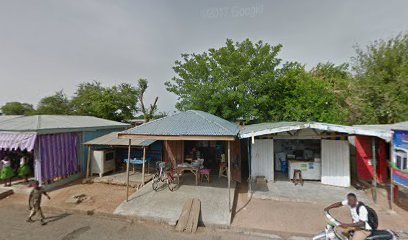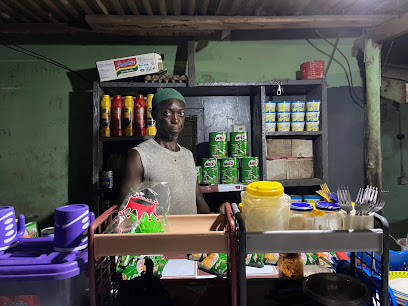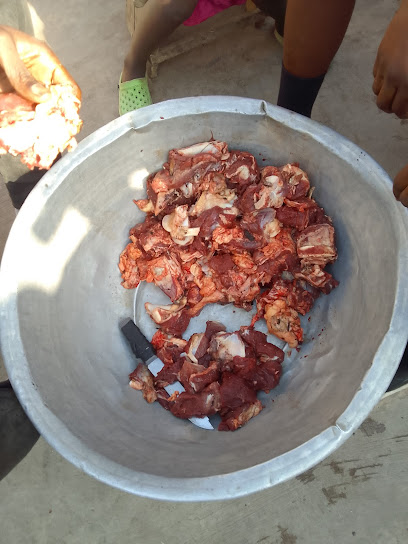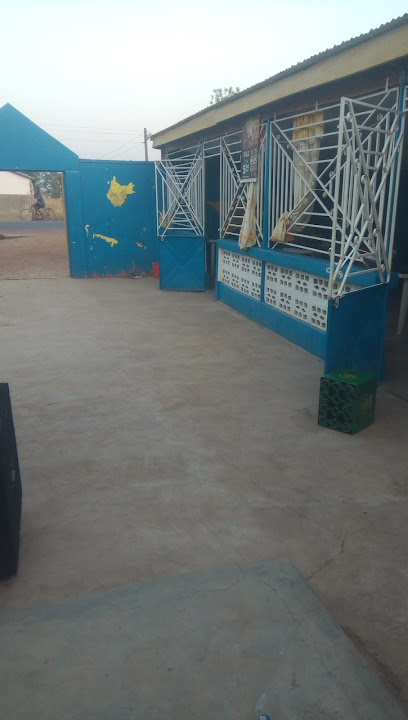
Explore the Historic Gwollu Slave Defense Wall
Discover the historical significance of the Gwollu Slave Defense Wall, a testament to resilience and culture in Ghana's Sissala region.
The Gwollu Slave Defense Wall in Ghana is a significant historical site that offers tourists a glimpse into the region's rich history and cultural heritage. This remarkable structure stands as a testament to the resilience and ingenuity of the Sissala people, providing an engaging experience for visitors seeking to learn about the region's past.
A brief summary to Gwollu Slave Defense Wall
- XQJJ+78R, Gwolu, GH
- +233208171199
- Monday 8 am-6 pm
- Tuesday 8 am-6 pm
- Wednesday 8 am-6 pm
- Thursday 8 am-6 pm
- Friday 8 am-6 pm
- Saturday 8 am-6 pm
- Sunday 8 am-6 pm
Local tips
- Visit early in the morning or late afternoon for the best lighting for photography.
- Consider hiring a local guide to gain deeper insight into the history and cultural significance of the site.
- Wear comfortable shoes as you will be walking along the wall and in the surrounding area.
- Respect the local customs and be mindful of any ongoing cultural events during your visit.
Getting There
-
Car
If you are traveling by car, start by heading towards Gwollu from any major city in the Upper West Region, like Wa. From Wa, take the Wa-Gwollu road (N10) for approximately 90 kilometers. Follow the road signs towards Gwollu. Once you reach the outskirts of Gwollu, look for local signage pointing towards the Slave Defense Wall. The wall is located at the coordinates 10.9807344, -2.2192469999999997, which can also be navigated using a GPS-enabled device. Parking is available near the site.
-
Public Transport
For those using public transport, you can take a shared taxi or a bus from Wa to Gwollu. Shared taxis typically depart from designated taxi ranks or bus stations in Wa. The fare to Gwollu is around 10-15 GHS (Ghanaian Cedi) per person. The journey should take approximately 1.5 to 2 hours. Once you arrive in Gwollu, you may need to hire a local taxi or walk to the Slave Defense Wall, which is about 3 kilometers from the main town center. Be sure to ask locals for directions or use your mobile device to navigate.
-
Bicycle
For the adventurous, biking to Gwollu can be a unique experience. Rent a bicycle from local shops in Wa and follow the same route as the car, taking the N10 highway towards Gwollu. The ride is approximately 90 kilometers and can take 4-5 hours depending on your pace. Ensure you bring sufficient water and snacks for the journey. Upon reaching Gwollu, you can lock your bike at the Slave Defense Wall area.
-
Walking
If you prefer walking, you can hike from nearby villages surrounding Gwollu. This option is only recommended for experienced hikers due to the distance and terrain. Local paths leading to Gwollu will lead you towards the Slave Defense Wall, approximately 10 kilometers from some nearby villages. Make sure to plan your hike during daylight hours and carry a map or use a GPS application for navigation.
Discover more about Gwollu Slave Defense Wall
Unmissable attractions to see
Gbelle Game Reserve
43.2 km
Discover the natural wonders of Gbelle Game Reserve, a national park in Ghana known for its diverse wildlife and stunning landscapes.

Issa
66.9 km
Experience the serene beauty and rich culture of Issa, a hidden gem in Ghana perfect for tourists seeking an authentic adventure.

Mushroom Rock, Wulling, Babile
80.6 km
Explore Mushroom Rock in Wulling, Babile - a stunning natural attraction in Ghana featuring unique geological formations and breathtaking landscapes.

Gure Porcupine Sanctuary
87.8 km
Explore Gure Porcupine Sanctuary in Sombo, Ghana, and witness the beauty of porcupines in a serene and dedicated wildlife sanctuary.

Golo Pie
88.0 km
Discover the authentic flavors of Ghana at Golo Pie, a charming tourist attraction in Sombo known for its delicious traditional pies.

Royal Masoleum (Namara, Degunni)
95.9 km
Explore the Royal Masoleum in Kaleo, a captivating tourist attraction showcasing Ghana's royal heritage and cultural significance amidst serene landscapes.

Sankana Chief Palace
96.2 km
Explore the Sankana Chief Palace, a cultural gem of Ghana, where history, tradition, and stunning architecture converge for a remarkable experience.

George Zangnaah - Xylophone maker
99.2 km
Explore the vibrant tradition of xylophone making at George Zangnaah's workshop in Takpo, Ghana, where art and culture harmonize beautifully.

Essential places to dine
Jolie's Bites
60.7 km
Experience authentic Ghanaian flavors at Jolie's Bites in Nandom – where every dish tells a story.

Waakye Joint
72.2 km
Experience authentic Ghanaian cuisine at Waakye Joint in Jirapa—where tradition meets flavor in every bite.

The Lioness Kingdom
80.6 km
Experience authentic Ghanaian hospitality at The Lioness Kingdom - your go-to guest house featuring delightful dining and live music in Funsi.

Assembly Guest House And Restaurant
81.8 km
Discover authentic Ghanaian flavors at Assembly Guest House And Restaurant in Lawra - your perfect dining destination.

Nba Abudu Indomie Base
82.7 km
Discover the rich flavors of Ghana at Nba Abudu Indomie Base - where traditional meets tasty in Lawra's culinary scene.

UNIQUE GARDEN'S
95.2 km
Experience authentic Ghanaian cuisine amidst serene gardens at UNIQUE GARDEN'S in Kaleo.

Essential bars & hidden hideouts
Sumbo's Spot, Daffiama
72.4 km
Experience the vibrant local culture at Sumbo's Spot, a lively bar in Daffiama offering delicious drinks and a welcoming atmosphere.

Zingpen pub
77.3 km
Discover the heart of Falu's nightlife at Zingpen Pub, where great drinks and a lively atmosphere await.

Forest Breezes Spot-lawra
81.2 km
Discover the serene charm of Forest Breezes Spot, where nature meets relaxation in the heart of Lawra.

Matron's Bar
81.5 km
Experience the vibrant nightlife of Lawra at Matron's Bar, where local culture meets a lively atmosphere for unforgettable evenings.

Sparks Bar, Restuarant and Entertainment
82.3 km
Discover the vibrant atmosphere of Sparks Bar, Restaurant and Entertainment in Lawra, where local cuisine meets lively entertainment in a welcoming setting.

Zola Pub
84.1 km
Discover the vibrant atmosphere and local flavor of Zola Pub in Babile, where refreshing drinks and Ghanaian hospitality await you.

Club City Pub
84.2 km
Immerse yourself in the vibrant nightlife of Babile at Club City Pub, where great drinks and a friendly atmosphere await you.

The Guys (3)
90.5 km
Discover the vibrant nightlife at The Guys Bar in Jang, where locals and tourists unite over drinks and entertainment.

Moses Bar
93.6 km
Experience the vibrant nightlife at Moses Bar in Heng, where local flavors and a welcoming atmosphere come together for an unforgettable evening.




